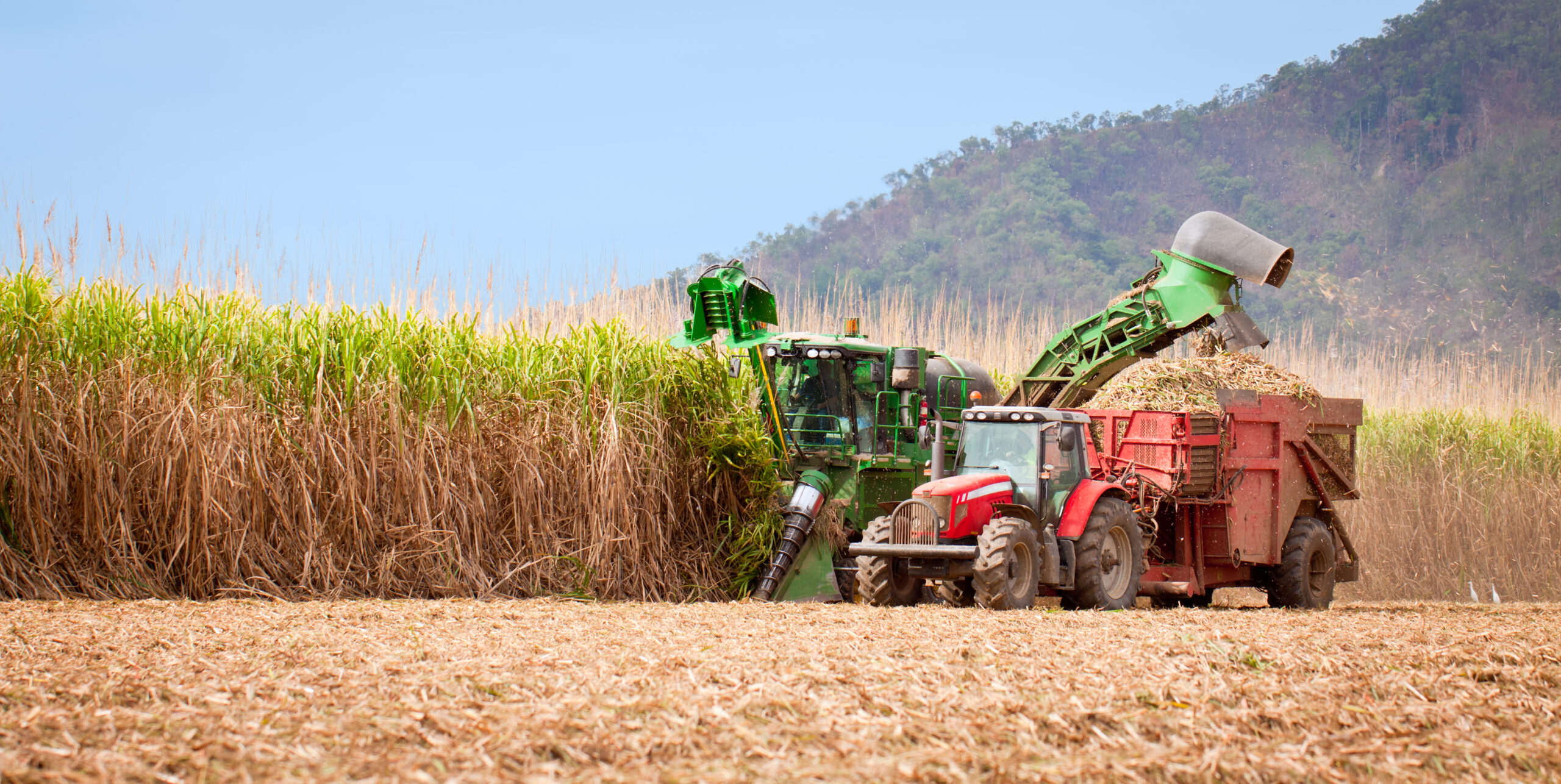
Sugar cane, although commercially viable poses its own challenges. Dr Terry Mabbett sheds light on OMEX products to tackle these obstacles in a safe and secure way.
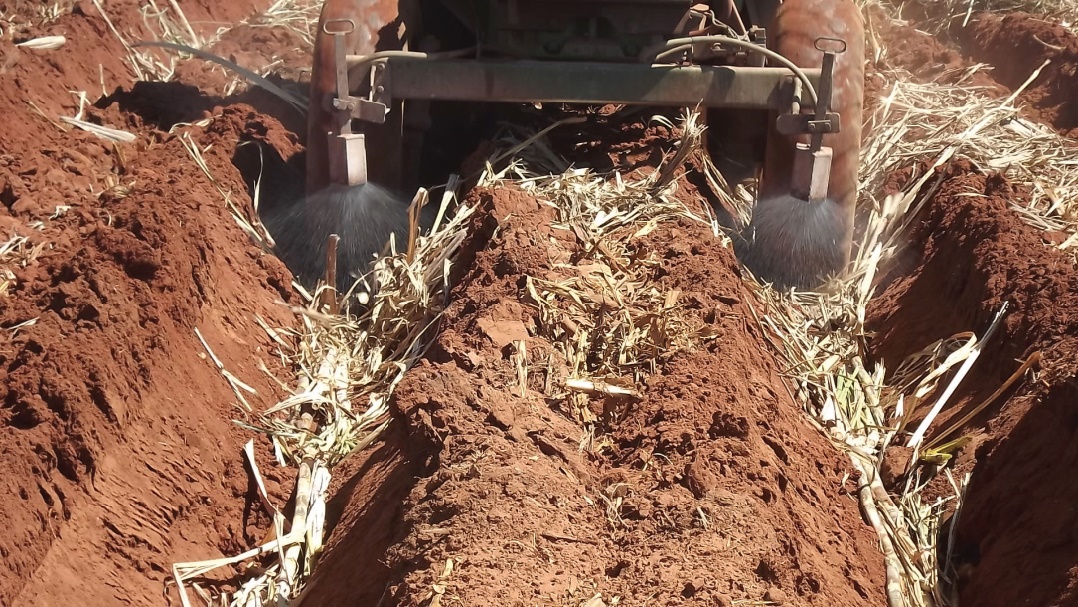
Sugar cane setts in the furrow undergoing spray treatment with soluble nutrients and biostimulant products.
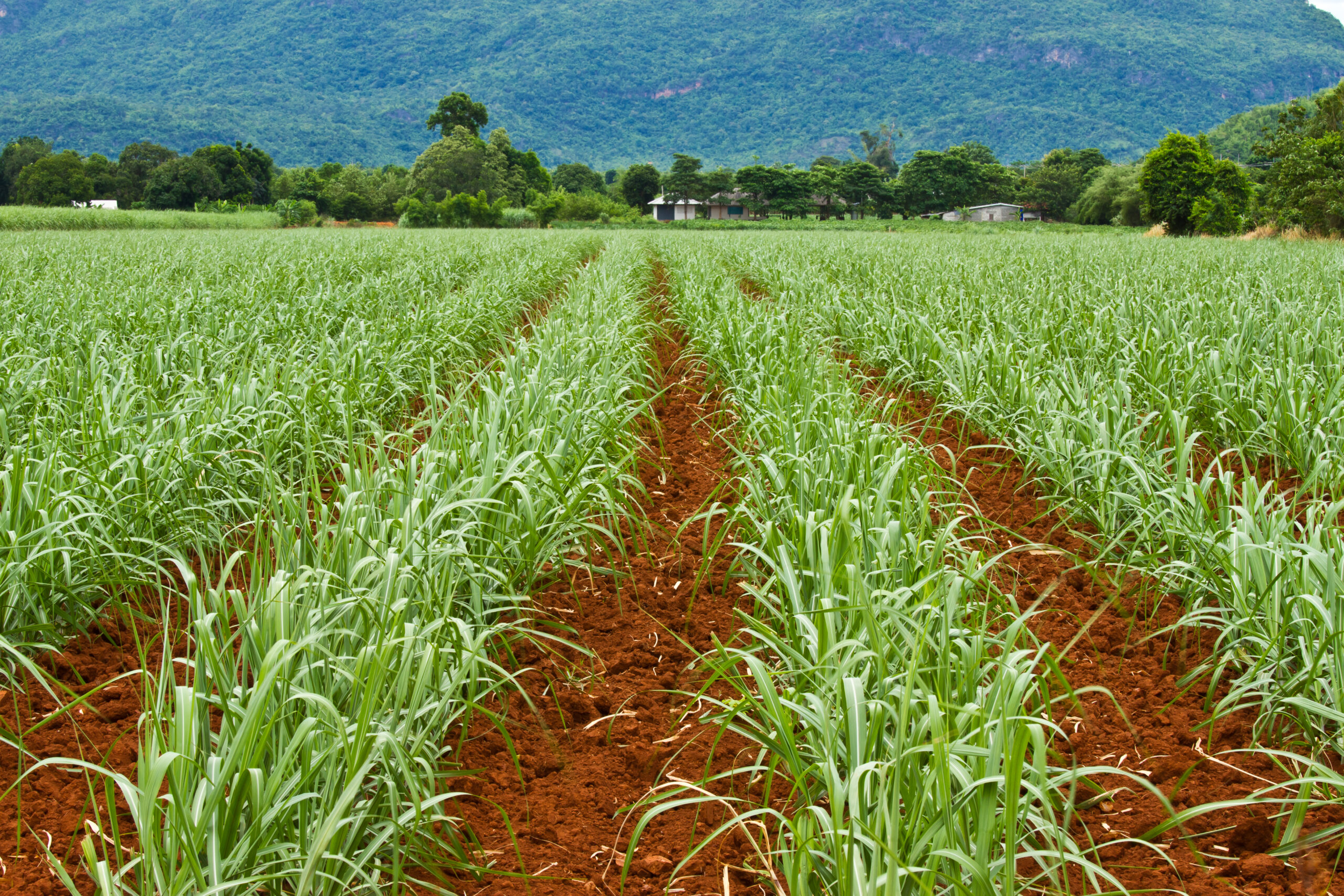
Inherently slow, early growth of sugar cane can be boosted by spraying soluble nutrients and biostimulants onto cane setts in the furrow.
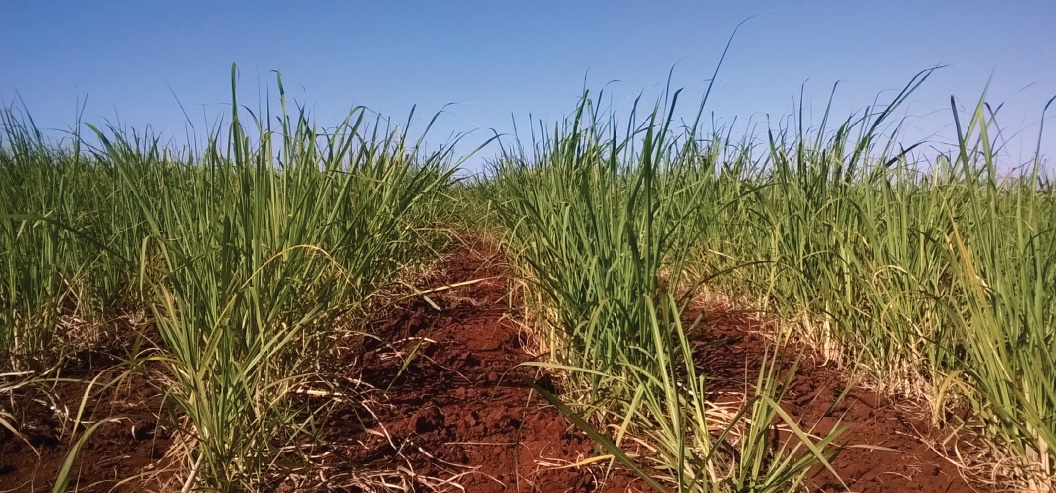
Prior to the tillering stage when vegetative growth starts over the inter-row area, the sugar cane crop remains highly susceptible to competition from weeds.
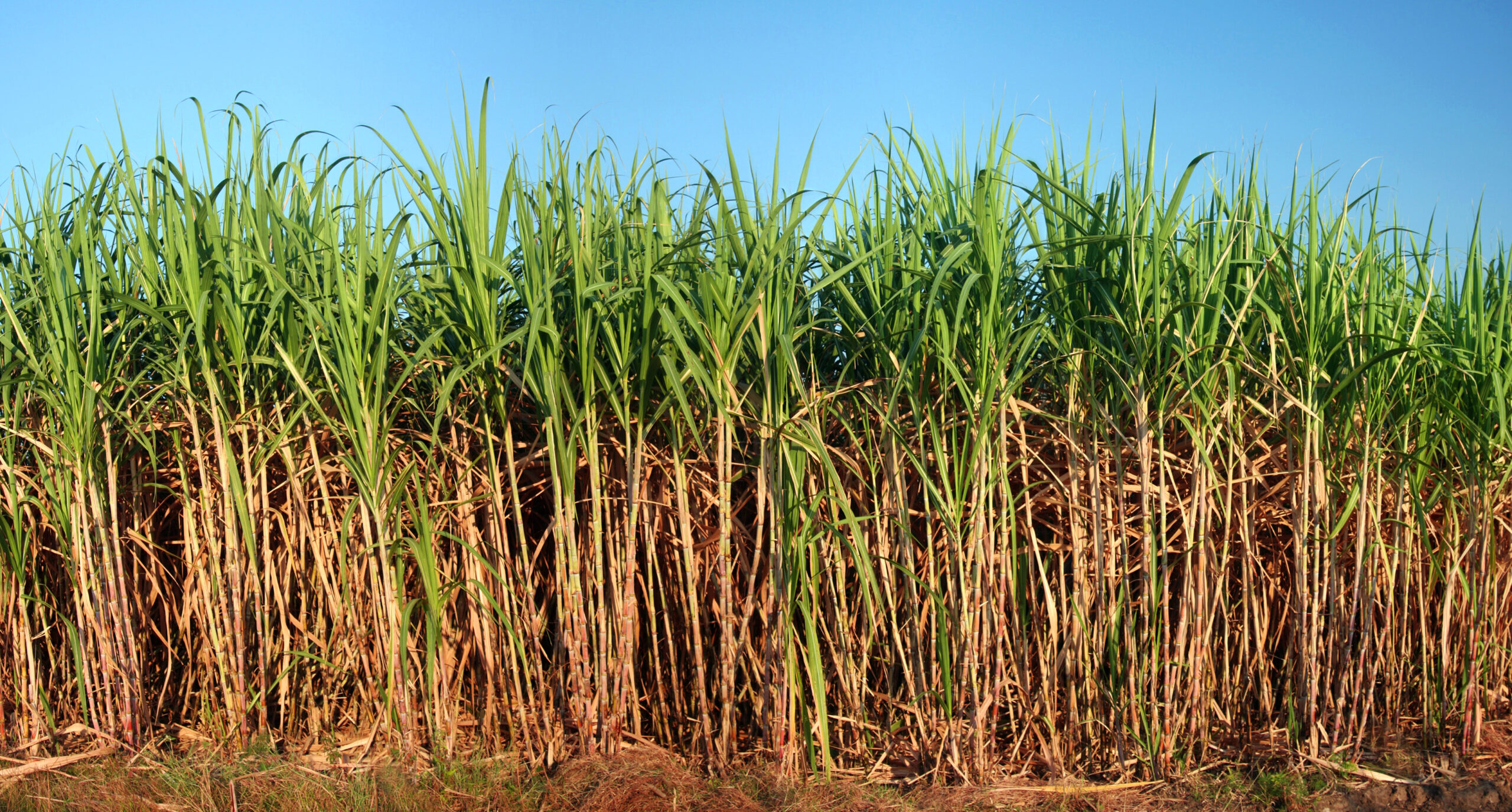
With prompt early treatment of cane setts in the furrow, new shoots emerge more quickly and look significantly stronger.

OMEX soluble nutrient and biostimulant products are used in many of the key sugar cane growing countries of the world.
SUGAR CANE HAS come a long way from the plant’s native, tropical-Asian origin. It is now cultivated as a field crop throughout the tropics although Asian countries still account for over 40% of the world’s production. Key sugar production players in the region include India, Sri Lanka, Pakistan and Bangladesh in the sub-continent; Thailand, Indonesia, Vietnam, the Philippines and Myanmar in South East Asia and of course China.
India is the world’s second-largest producer of sugar cane after Brazil. China is the third largest producer and also the biggest consumer. The world’s biggest sugar exporters are concentrated in Asia with around 60% of total world sugar exports. Thailand, Indonesia and Cambodia are prominent with Thailand representing the world’s second biggest exporter of sugar after Brazil.
When compared with other field crops sugar cane takes a relatively long time, about 10-24 months to grow, mature, ripen and be ready for harvest. However, as a commercial cash crop sugar cane is generally more safe and secure and therefore well worth the wait. The crop does not have the difficult and costly to manage pest control problems which plague cotton and do not have the social and political baggage which tracks and trails tobacco.
As a so-called C4 plant, sugar cane is considered to be one of the most efficient converters of solar energy into sugar. The growth and development of sugar cane is traditionally divided into the following phases:
- Germination phase – sprouts form on planted pieces of sugar cane (stem) called setts.
- Tillering phase – starts 15-20 days after the first sprouts appear.
- Grand growth phase – starts 120 days after sugar cane setts are planted and last for up to 120 days in a 12-month sugar cane crop.
- Maturation and ripening phase – lasts 3 months.
Like other crops sugar cane requires feeding but its growth pattern is such that the use of soil-applied, solid, fertilizer becomes practically impossible, let alone effective or efficient, once the tillering of this essentially huge grass gets underway to cover the entire field area.
Like other crops sugar cane requires feeding but its growth pattern is such that the use of soil-applied, solid, fertiliser becomes practically impossible, let alone effective or efficient, once the tillering of this essentially huge grass gets underway to cover the entire field area.
So what are the mechanics of foliar feeding of sugar cane, including the key nutrients, and at what stages they are required in the growth cycle of this monocotyledonous crop? who better to ask than OMEX Agrifluids, an R&D-based company with a long and distinguished provenance in the design, manufacture and marketing of soluble nutrient products for application to agricultural and horticultural crops worldwide?
Much of OMEX’s expertise and experience with sugar cane using the company’s portfolio of products has been gained in South America and particularly Brazil, one of the world’s biggest producers of cane sugar. That said a number of Asian countries have already established their own recommendations for the use of OMEX products for the foliar feeding of sugar cane.
To find out more Dr Terry Mabbett travelled to the company’s headquarters at Kings Lynn, in the County of Norfolk in the United Kingdom to speak with Peter Prentis, the managing director at OMEX whose remit includes product development and sales throughout Asia.
Prentis told Far Eastern Agriculture how despite the crop’s overall growth rate, eventual size and density, sugar cane is notoriously slow to start and therefore requires nutrient priming to ensure new, strong shoots sprout rapidly from the setts and push through the soil. Sugar cane is propagated from short lengths of stem cuttings or setts each with a number of buds. Buds develop into shoots and grow into new ‘stalks’ (canes) which are harvested for their rich sucrose (cane sugar) content. The crop takes between 10-24 months before the canes are ready for harvest but surprisingly for such a generally vigorous crop its initial growth phase includes germination of the setts, growth of the buds into shoots and establishment of the root system is a very slow and drawn out process.
Nutrient priming of sugar cane
At the root of sugar cane’s tardy take-off is the complex unfolding of root development with three separate and disparate rooting systems appearing at different stages of the plant’s growth and development.
The initial roots of the sugar cane sett are thin, branched, superficial and transitory. These are followed by stem roots which are longer, straighter and more permanent. These second-stage roots have two primary functions – to supply water and nutrients and to provide physical support to the rapidly establishing sugar cane plant. Finally, the buttress roots will go deeper into the soil to anchor the now substantial plants firmly into the ground. By this time sugar cane will have already grown to a considerable height and density and will be difficult to work inside for fertiliser application.
Prentis says the slow initial growth phase of sugar cane presents growers with an early window of opportunity at the very time when sugar cane requires a nutrient boost, to kick start germination and to secure the establishment of the setts as rapidly and securely as possible. It offers farmers a valuable opportunity to carry out growth priming procedures by applying soluble nutrient formulations to sugar cane setts in the furrow.
OMEX has recognised this requirement and opportunity for an early boost to germination to secure rapid early growth and establishment. Indeed OMEX recommendations for sugar cane are now underpinned by the treatment of setts in the furrow with soluble nutrients and biostimulants to achieve earlier crop establishment and enhanced tillering to give more and bigger canes to be cut at harvest time.
To this end, OMEX in cooperation with distributors and farmers across the sugar cane world has monitored early growth and establishment with a multitude of measurements. What they essentially found is that shoots emerge from the ground earlier and faster and look stronger for at least two to three months. Growth is quicker and sugar cane plants become more securely established in a shorter space of time.
There is another good reason for priming planted cane setts but often overlooked due to the general but misinformed view that sugar cane, because of its overall fast growth rate, high foliar density and size, is not troubled by weed competition. This may be true once the sugar cane tillers have covered the ground but this is certainly not the case during the early growth phases of the crop.
Weed control is most needed just after planting the setts because they will have to grow for a considerable time before reaching the stubble stage to cover the soil. In fact, during this early growth phase weeds grow much faster than sugar cane with more time and opportunity to develop because they will have begun to germinate and grow immediately after the last harrowing or furrowing.
Later on, the sugar cane plants will have covered the ground and formed a canopy to shade out weeds, but this takes close to five months for planted cane and three months for ratoon cane in a moist warm climate. Thus anything which gives sugar cane a kick start and a boost during this early growth phase can only help to mitigate weed competition.
OMEX product profile for sugar cane
Prentis sheds light on the soluble nutrients and commercial products supplied by OMEX and which underpin this philosophy and best practice for early stage growth and establishment in sugar cane.
“First on the sugar cane ‘sett’ and scene is our OMEX Bio 20,” said Prentis.
“Applied as a spray to sugar cane setts in the furrow. This well tried and tested product combining a full range of essential macronutrients and micronutrients, and boosted by the addition of organic material derived from a single variety of seaweed, stimulates early growth activity of the sugar cane sett,” added Prentis.
Peter says OMEX Bio 20 is more than just a balanced formulation of essential plant growth nutrients. “This bio-stimulant does just what the name says by stimulating root growth and development to promote greater root biomass and to ultimately maximise access, absorption and utilisation of soil moisture and soil nutrients dissolved therein. The net result is the quicker establishment and faster and stronger early plant growth,” he said.
Next on the list for treatment of cane setts in the furrow are two of OMEX’s single nutrient products. They are OMEX ‘Kingfol Zinc’ and OMEX ‘Kingfol Manganese’ featuring a pair of essential micronutrients which underpin the growth, development, yield and quality of sugar cane.
OMEX Kingfol Zinc contains 70% w/v (weight/volume) zinc. “Zinc is the most widely spread soil-based micronutrient but invariably the most inaccessible to crop plants because huge amounts are locked up as insoluble zinc and therefore unavailable to plant roots,” said Peter Prentis.
“Plant available shortfalls in naturally occurring soil-based zinc make deficiency of this essential micronutrient the most acute and widespread across the world’s major field crops and sugar cane is no exception.”
Zinc stimulates root activity and is well established for its crucial role in early crop growth. Deficiencies of zinc in sugar cane are reflected in reduced tillering, shorter internodes and thinner stalks exhibiting a loss in turgidity. At the leaf tissue level, zinc deficiency shows up as marked chlorosis (yellowing) of the veins, especially on young leaves. The area around the midrib and the leaf margin remains green but the leaf blade is otherwise chlorotic. Leaves are less numerous and generally shorter in length with a high incidence of leaf tip death. The presence of red areas or lesions is due to the presence of anthocyanin pigment. At the cell level, zinc is a crucial co-factor for a number of enzyme systems.
OMEX ‘Kingfol Manganese’ contains 52.8% w/v manganese. Like zinc, the manganese micronutrient is an important enzyme activator. Deficiencies will rapidly show up as chlorosis (yellowing) of the leaves but in this case of the leaf lamina tissue between the veins from the leaf tip and towards the centre of young leaves. In cases of acute deficiency, the chlorotic tissue may die, turn brown and split along the lines of necrosis with marked leaf twisting. Mature leaves are also affected but in this case, are accompanied by reddish-coloured necrosis also indicating the presence of anthocyanin pigment. Inter-vein leaf necrosis rather than necrosis of the vein itself is what distinguishes manganese deficiency from zinc deficiency in sugar cane.
Peter said some growers find it more convenient to use the OMEX Kingfol ‘combination’ product containing zinc and manganese together with copper. Kingfol Copper/Manganese/Zinc (Kingfol Cu/Mn/Zn) contains Cu, Mn and Zinc at respectively 8.0% w/v, 33.0% w/v and 11.0% w/v.
Kingfol Cu/Mn/Zn is especially appropriate and useful if soils are deficient in available copper which is a crucial co-factor for enzymes involved in photosynthesis. Copper is clearly an essential micronutrient for all crops and especially sugar cane which quickly ‘lets the farmer know’ when in deficiency. Young leaves are soon affected with green splotches graduating into bleaching, stalk and meristems lack turgidity and internode length and tillering are reduced.
Last but not least is OMEX Performa
(Boron (5.68%), Zinc (19.20%), Molybdenum (1.52%) plus seaweed extract as a biostimulant). OMEX Performa was custom-designed for sugar cane grown in South America where it has been used successfully by growers, especially in Brazil. Boron and Molybdenum, both present in OMEX Performa, are the two least well-known and understood micronutrients but essential nevertheless.
Molybdenum has a role in nitrogen fixation with deficiencies affecting both stalks and leaves. Stalks are shorter and more slender than usual, full-grown leaves show yellow streaking with generally slow vegetative growth.
Boron has a vital role in the translocation of sugars. Deficiencies show up rapidly in young leaves which may be distorted with translucent lesions (water sacs) along the leaf margins. Affected plants have many tillers, brittle and bunched leaves and dead apical meristems.
Why prime sugar cane?
With prompt early treatment of cane setts in the furrow, new shoots emerge more quickly and look significantly stronger. These new green shoots start to photosynthesise more rapidly thus contributing to growth, establishment and development that much sooner in the crop cycle.
Compared with untreated setts in the same field, these earlier emerging shoots will continue to look stronger and more robust for 2-3 months after which the advantage appears to fade as a more even stand is presented. However, the proof of the pudding comes in the eating or in this case the harvesting of treated and untreated plants. Those crops treated with Bio 20, Kingfol Zinc, Kingfol Manganese, and other OMEX products recommended for use in sugar cane, yield higher tonnages due to bigger and heavier canes and, more crucially, higher sugar contents.
Early treatment of setts in the furrow with OMEX soluble nutrient and biostimulant products is now carried out in many of the key sugar cane growing countries of the world including India, Thailand and Indonesia.
Farmers and growers will clearly baulk at the prospect of trying to spray well-grown sugar cane for the simple reason that they will be unable to move with ease and efficiency through the crop whether using tractor drawn/mounted sprayers or manually-operated sprayers. The only other option for spraying sugar cane at these more advanced stages of growth and development is the aerial application of nutrients.
Peter Prentis sums it up “Applying nutrients and biostimulants at the very beginning of the crop is by far the easiest option for sugar cane farmers and growers. They can avoid the logistical constraints on driving vehicles through or walking through well-grown sugar cane with all the associated problems of achieving adequate spray coverage.”
“However, the single biggest advantage of treating sugar cane setts in the furrow is providing these fledgling sugar plants with the right nutrient requirements at the right time which is at the rooting and establishment stage of the crop,” Peter concludes.
